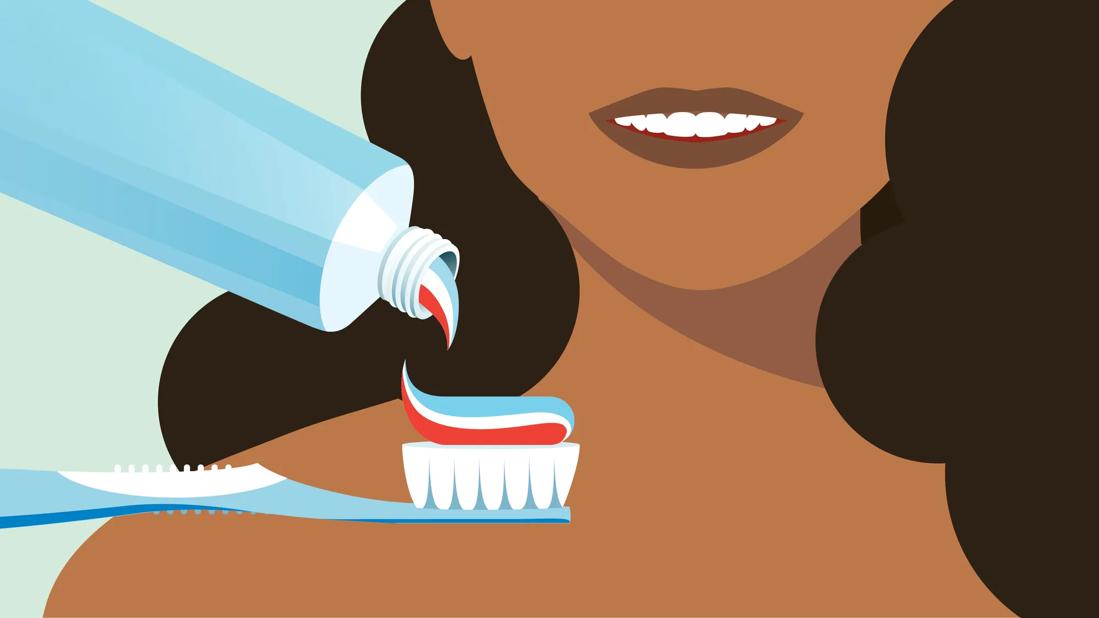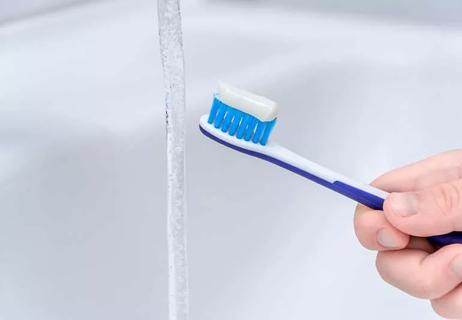A variety of products can be effective at removing stains on teeth

The human quest for a brighter smile dates back surprisingly far in history. In fact, ancient Roman dentists recommended using a mixture of goat’s milk and urine — yes, urine! — to whiten teeth.
Advertisement
Cleveland Clinic is a non-profit academic medical center. Advertising on our site helps support our mission. We do not endorse non-Cleveland Clinic products or services. Policy
Thankfully, teeth whitening products have advanced over the past millennia. You’ll now find numerous products on store shelves promising pearly whites.
So, what’s worth trying? Let’s find out from dentist Anne Clemons, DMD.
There are several safe and effective ways to remove unsightly stains that life can leave on your teeth, says Dr. Clemons. Options include using over-the-counter products at home or heading to your dentist for a professional teeth whitening session.
If you’re a do-it-yourself person, you have choices when it comes to undoing tooth discoloration from aging or food and drinks. They include:
You’re already brushing your teeth twice a day for two minutes at a time to keep your teeth and gums healthy, right? Whitening toothpaste can extend the benefits of that daily habit, says Dr. Clemons.
This specially formulated toothpaste may include hydrogen peroxide or carbamide peroxide (which includes hydrogen peroxide) to lighten tooth color. Some brands also may include baking soda to attack stains.
Research shows that whitening toothpaste can gradually lighten tooth color by one or two shades. “With regular and consistent use, you’ll start to see a difference over time,” Dr. Clemons says.
Advertisement
Swishing an over-the-counter whitening rinse in your mouth can help lighten teeth, but don’t expect to see drastic results. The hydrogen peroxide or other bleaching agents in a rinse just don’t spend enough time in your mouth to work quickly.
“The rinse just isn’t in contact with your teeth for very long,” explains Dr. Clemons. “But if you really stick with it, you may see a shade or two difference in a few months.”
Whitening strips keep a thin layer of a more concentrated peroxide gel against your teeth for longer periods. This more intensive process can bring swift results, with visible lightening within days.
“Given the higher concentrations of hydrogen peroxide or carbamide peroxide, it’s really important to read and follow the instructions on the product,” advises Dr. Clemens. “It’s not something you use all the time either.”
Ditto for whitening gels applied directly to teeth using a brush.
Overuse of strips or gels can result in temporary sensitivity in your teeth or irritation to your gums. Laboratory research also suggests that aggressive bleaching may cause tooth erosion or other dental issues.
If you experience discomfort in your mouth after trying a whitening product, it’s best to take a break from it, notes Dr. Clemons. Switching to a milder product is also recommended.
If you need whiter teeth in a hurry and want to do it at home, tray-based whitening products may be your answer.
These trays deliver even higher concentrations of peroxide for longer stretches than strips and gels, delivering even faster results. Again, it’s extremely important to use caution and follow the manufacturer’s instructions.
As good as many at-home whitening products may be, they often can’t match what’s available at your dentist’s office.
Professional whitening treatments typically use stronger concentrations of hydrogen peroxide or carbamide peroxide, clarifies Dr. Clemens. As you might expect, that brings faster and more dramatic results.
A 30-minute session with your dentist may be all you need to increase the wattage of your smile. You can walk in with one shade of teeth and walk out with them looking much whiter.
In addition, your dentist can help you determine why your teeth are discolored. Whitening works best on teeth that have yellowed with age or been stained by food or drink. A brown or gray tint on your teeth may signal deeper problems.
In addition, your dentist can address concerns such as gum disease or cavities to improve the overall health of your mouth. Bleaching works best after those underlying issues are addressed, too.
Advertisement
There are a lot of online theories about whitening teeth using alternative approaches. Be wary of trying them, warns Dr. Clemens. They’re likely to be ineffective and, in some cases, can even damage teeth.
“Alternative methods tend to be in the category of myths,” she says. “And what’s worse, they could damage your teeth over time.”
Examples include oil pulling, an ancient dental remedy from India that has enjoyed a rebirth of interest thanks to social media. It involves taking an edible oil — such as sesame oil, olive oil or coconut oil — and swishing it around in your mouth.
The thought process is that the oil is cleaning not only your teeth but also between them. Does it work? “I haven’t seen any good evidence that it will whiten teeth,” says Dr. Clemons.
Other alternative methods to avoid include using apple cider vinegar or charcoal powder.
Don’t be tempted to use the hydrogen peroxide in your medicine cabinet to try whitening your teeth either. The hydrogen peroxide in whitening products has been carefully formulated for use in your mouth.
Bottom line? If you’re going to try whitening your teeth, get the right products for the job.
Dr. Clemens recommends looking for the American Dental Association (ADA) Seal of Acceptance on whitening toothpaste and other teeth-bleaching products. It indicates they’ve been found safe and effective in independent tests.
Advertisement
Once you whiten your teeth, you’ll want to keep them that way. Dr. Clemons offers the following tips to keep your smile sparkling.
Talk to your dentist about any concerns you have with the color of your teeth. “Start the conversation with them if you want whiter teeth,” recommends Dr. Clemons. “They’ll be able to tell you what products might work best for you and offer other suggestions.”
Advertisement
Learn more about our editorial process.
Advertisement

You might have a sensitive gag reflex — but gagging while brushing can also be a result of certain medical conditions

An old, worn toothbrush is a hazard to your teeth and gums and a breeding ground for germs and bacteria — replace it every three to four months at least

Done correctly, daily flossing can help keep your teeth and gums healthy

Bloody gums after flossing usually signal a buildup of plaque, tartar and bacteria

Despite unfounded theories, fluoride has the power to make your teeth stronger

Studies show they do a better job than manual brushes at removing plaque and debris

This tool is an add-on to your regular brushing and flossing habits, not a replacement for them

Brushing for two minutes, twice a day is your baseline for dental health

The best parenting style balances enforcing rules and showing plenty of love

Tips include cutting back on sugar, focusing on exercise and managing stress

It can be harder to let go when you’ve invested time, energy and emotions — but it might be the healthier choice long term